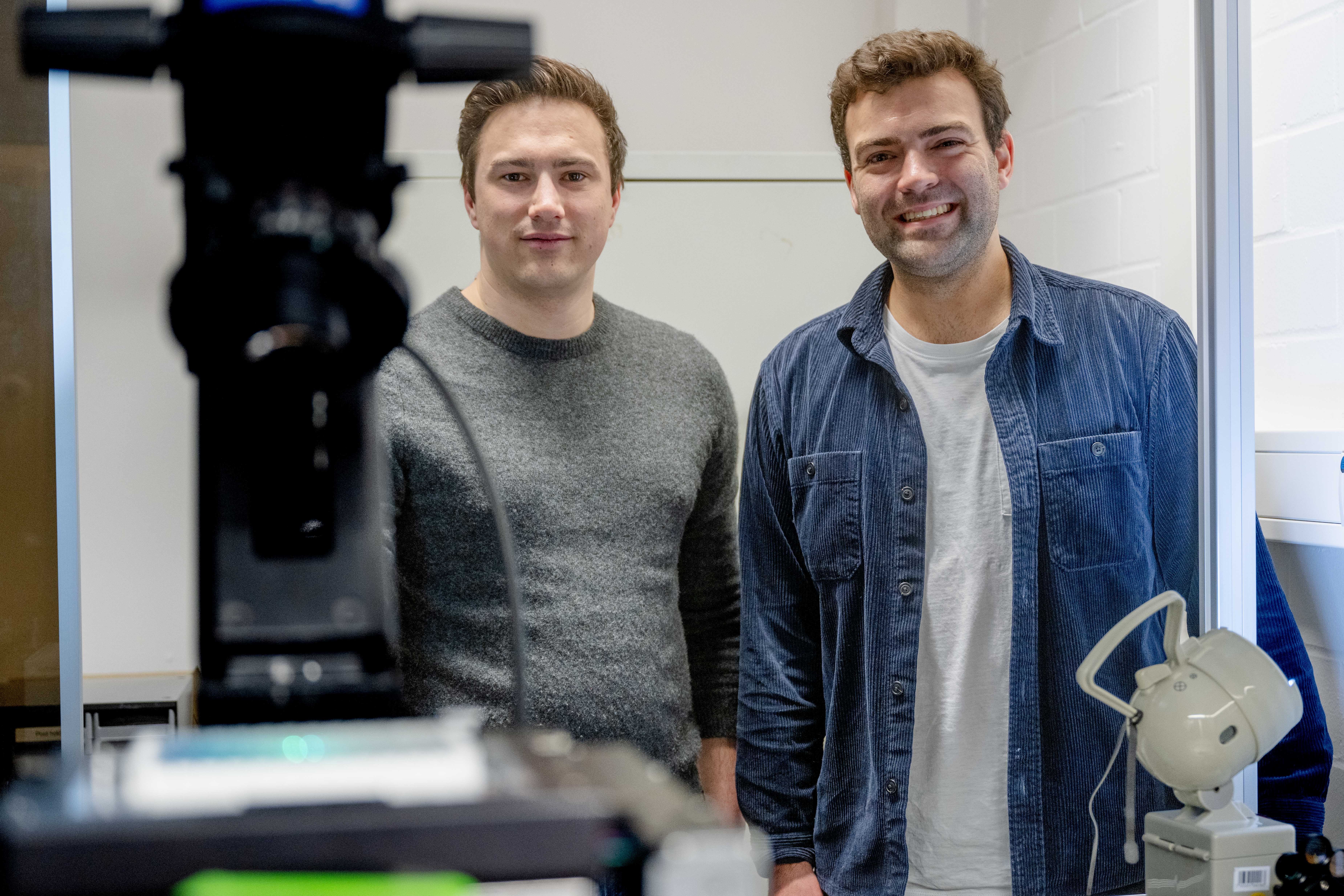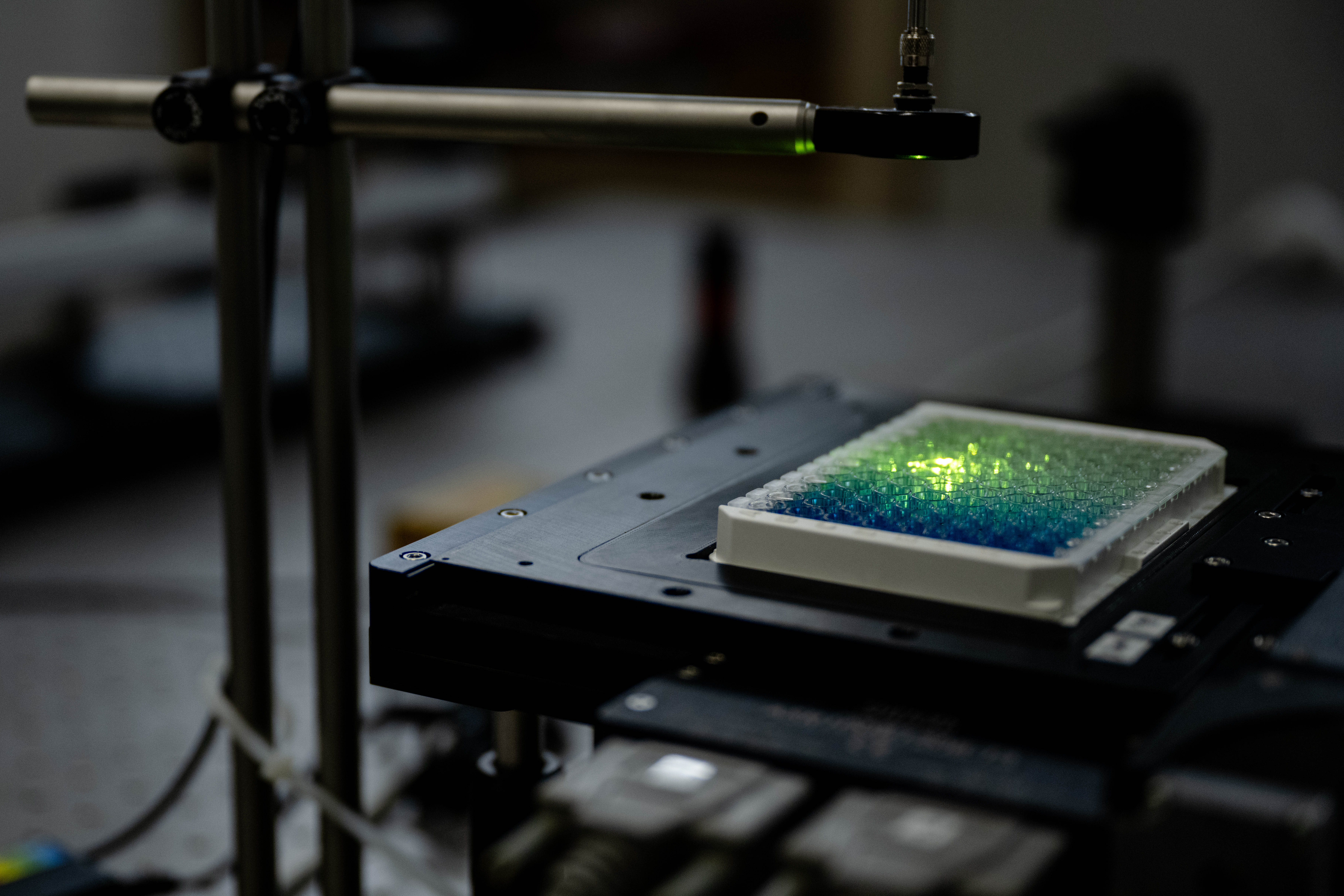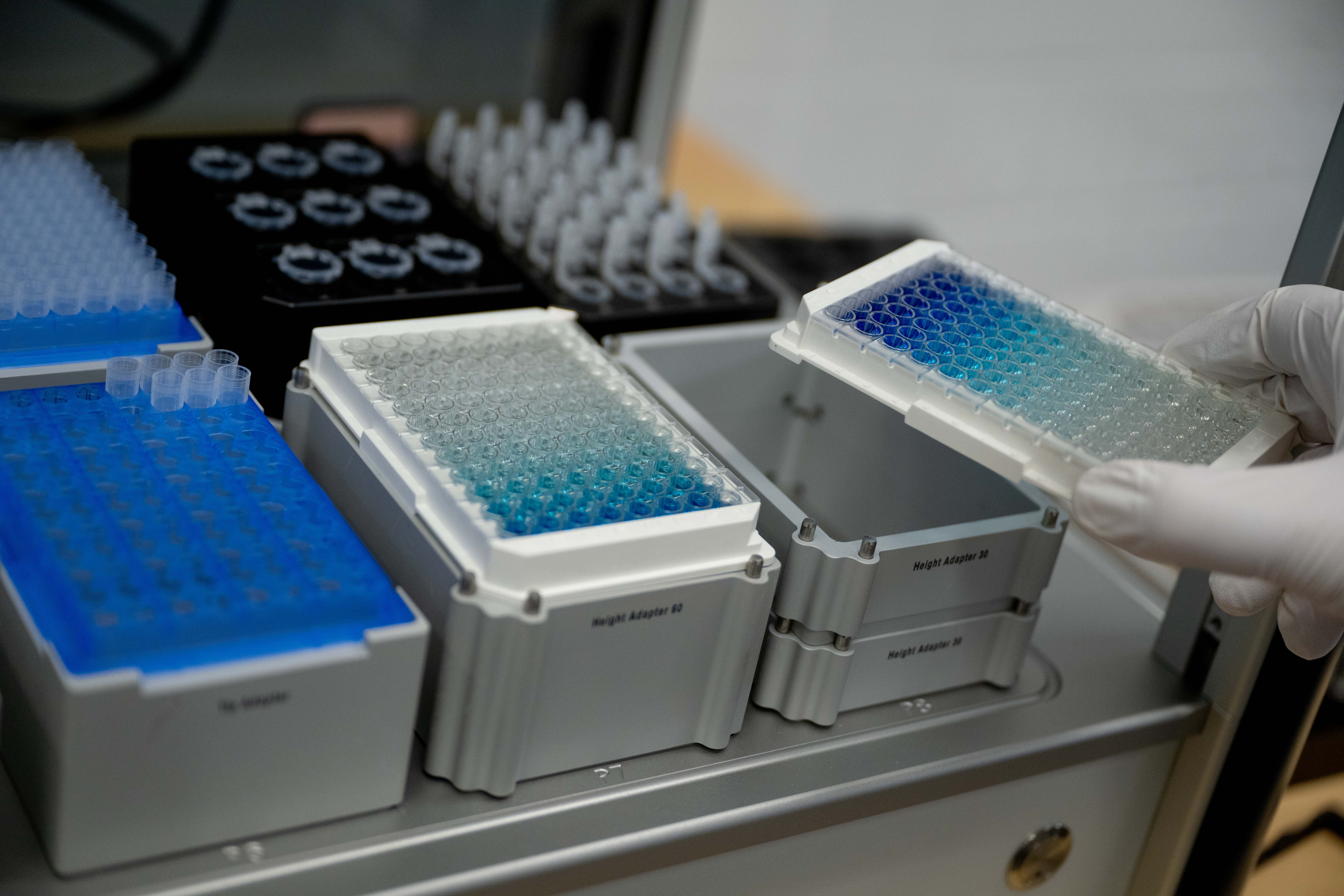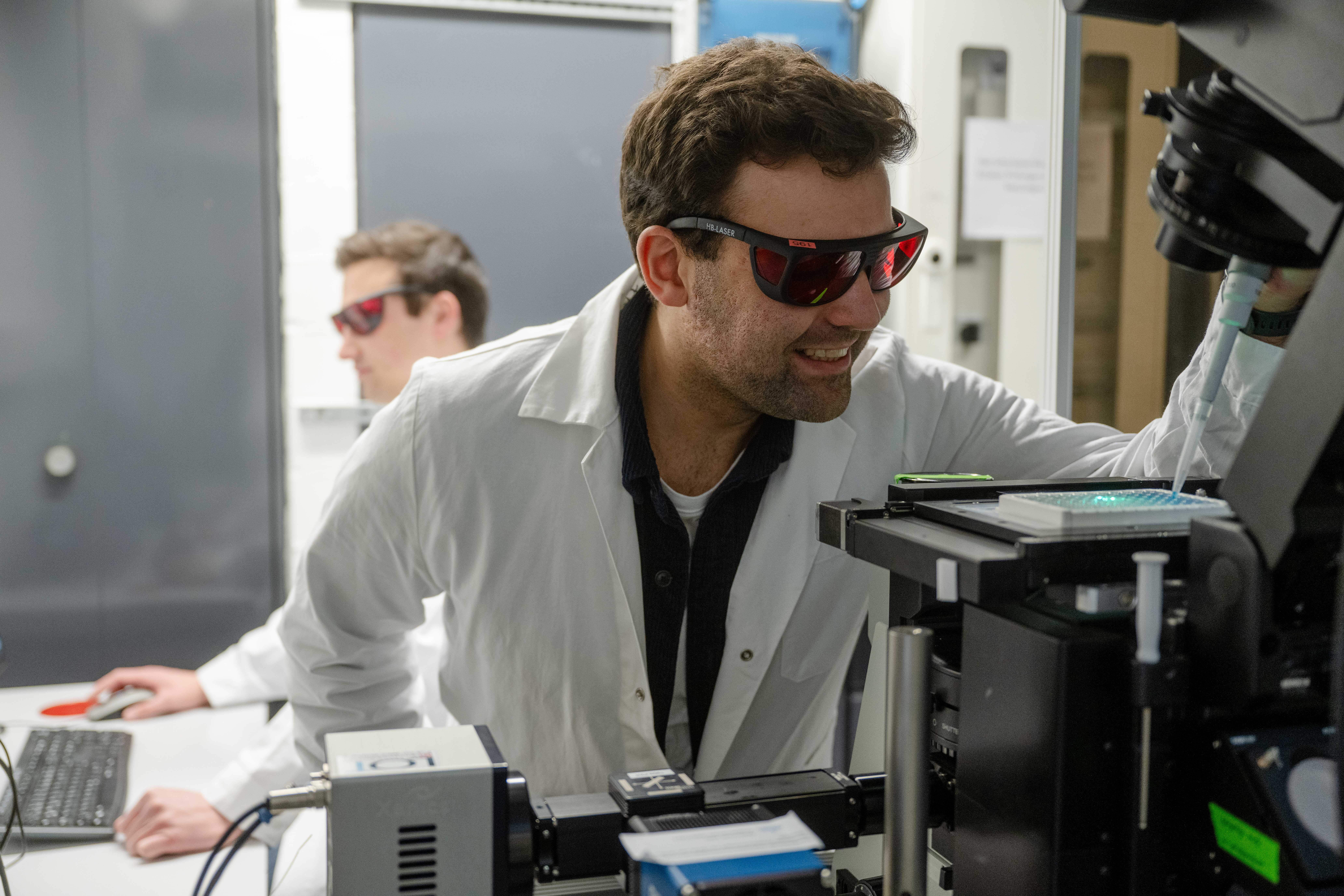Research and development | Press release | Reading time 3 Min.
Tracking reactions with invisible light, saving materials and time: New nanosensors make diagnostic procedures more sensitive
The Fraunhofer Institute for Microelectronic Circuits and Systems IMS and Ruhr University Bochum have developed a process that enables a new form of signal amplification for diagnostic tests. Through the advanced use of luminescent single walled carbon nanotubes (SWCNTs) in bioanalytics, test procedures can be carried out more sensitively, quickly and cheaply. The sensors can be used for enzymatic processes. Their adaptability to different reaction conditions opens up a wide range of applications for standard methods such as ELISAs (Enzyme-linked Immunosorbent Assay). The results were published on 15 December 2023 in the journal »Angewandte Chemie International Edition« and open up new possibilities for improving diagnostic procedures and saving detection agents.


Diagnostic limits can be improved with luminous carbon sensors
Many diagnostic procedures use light to detect the amount of a particular substance. This may be a coloured substance or a luminescent substance. Unfortunately, there are many background signals in the visible light range. To shift the optical signal of a measurement into a better spectral range, the researchers used carbon tubes less than one nanometre in diameter. This is about 100,000 times thinner than a human hair. The sensors fluoresce in the near-infrared (NIR) range, which is not visible to the human eye, and do not bleach. In addition, the sensors' fluorescence is sensitive to their chemical environment due to a modification on their surface. This makes it possible to observe chemical reactions and detect reaction products when they interact with the nanotube. The fluorescence of the nanotubes shifts the signal into the NIR, which, combined with the high sensitivity of the nanotubes, results in a shift in the detection limit. This is important, for example, when disease markers are present at very low levels in an infection or disease such as cancer.
Shifting the detection limit with sensitive nanosensors
The ability to tailor the nanotubes to different analytes opens up a wide range of possibilities, including an increase in sensitivity. This gain in sensitivity allows for a potential shift in detection limits, which can lead to both material and time savings in diagnostic processes. This innovative approach could significantly increase the efficiency of detection methods in medical diagnostics.
Sensor detects different substrates
The group demonstrated that the new sensor principle works using the substrates p-phenylenediamine and tetramethylbenzidine (TMB) for the enzyme horseradish peroxidase (HRP). »This enzyme is used in a variety of biochemical detection methods,« explains Justus Metternich of the Fraunhofer IMS.


»In principle, however, the concept can be applied to all kinds of systems. For example, we have also investigated the enzyme β-galactosidase, which is of interest for diagnostic applications. With a few modifications, it could also be used in bioreactions.«
In the future, the group plans to adapt the sensors for other applications. For example, depending on the application, the sensors could be made more stable with so-called quantum defects. »This would be particularly advantageous if you not only want to measure in simple aqueous solutions, but also want to follow enzymatic reactions in complicated environments with cells, in the blood or in a bioreactor itself,« explains Sebastian Kruss, Professor of Physical Chemistry at Ruhr University Bochum and head of the Attract Group Biomedical Nanosensors at the Fraunhofer IMS.
Funding
The work was funded by the Fraunhofer Attract Programme (038-610097), the German Research Foundation as part of the RESOLV Cluster of Excellence (EXC 2033-390677874) and the VW Foundation.
Original publication
Justus T. Metternich, Björn Hill, Janus A.C. Wartmann, Chen Ma, Rebecca M. Kruskop, Krisztian Neutsch, Svenja Herbertz, Sebastian Kruss, Angew. Chem. Int. ed. 2023, e202316965.
DOI: doi.org/10.1002/anie.202316965
Fraunhofer IMS
Smart Sensor Systems for a safe, secure, and sustainable future: In numerous state-of-the-art research laboratories, Fraunhofer IMS works with more than 250 talented scientific employees and students on innovative microelectronic solutions. As a trusted research and development partner for industry, the institutes’ goal is to develop customized sensor systems for your specific needs in the areas of biomedical sensors, optical systems, open source semiconductors, embedded AI, technology services, and even quantum technology. The teams in the four business units – Health, Industry, Mobility, and Space and Security – are committed to implementing outstanding and versatile microelectronics that can be utilized across all your projects. For example, these solutions feature high integration capability, enormous energy efficiency and reliable functionality even under harsh conditions.
Ruhr University Bochum
With 21 faculties, 39,000 students and more than 5,700 employees, Ruhr University Bochum is one of the ten largest universities in Germany. As a reform-oriented campus university, it houses the full breadth and width of expertise in the main branches of science and research under one roof. Research at Ruhr University Bochum is characterised by interdisciplinary collaboration and networking. Our researchers pursue interdisciplinary research projects in nine Research Departments: Solvation Science, IT Security, Neuroscience, Materials Research, Center for Religious Studies, Protein Research, Plasmas with complex interactions, Subsurface Modeling and Engineering und Closed Carbon Cycle Economy. In the process, they overcome the boundaries between different disciplines and strengthen knowledge exchange – including with external partners within University Alliance Ruhr and among universities in Germany and abroad.
https://www.ruhr-uni-bochum.de/en